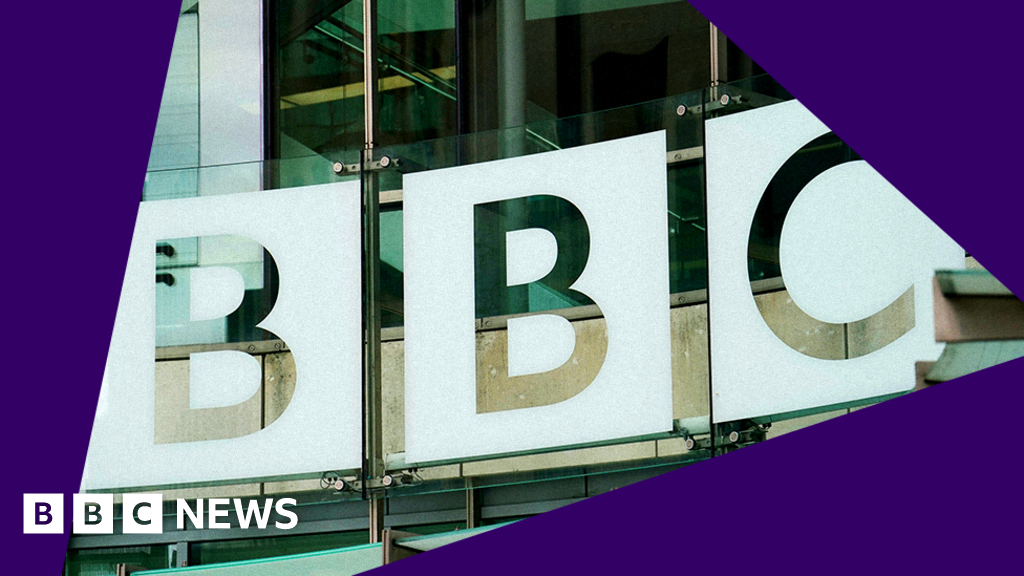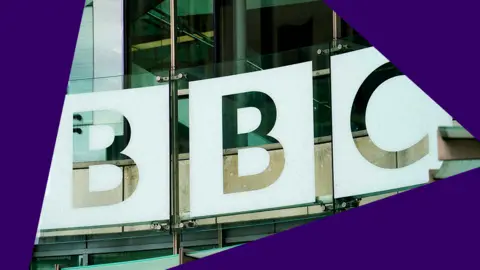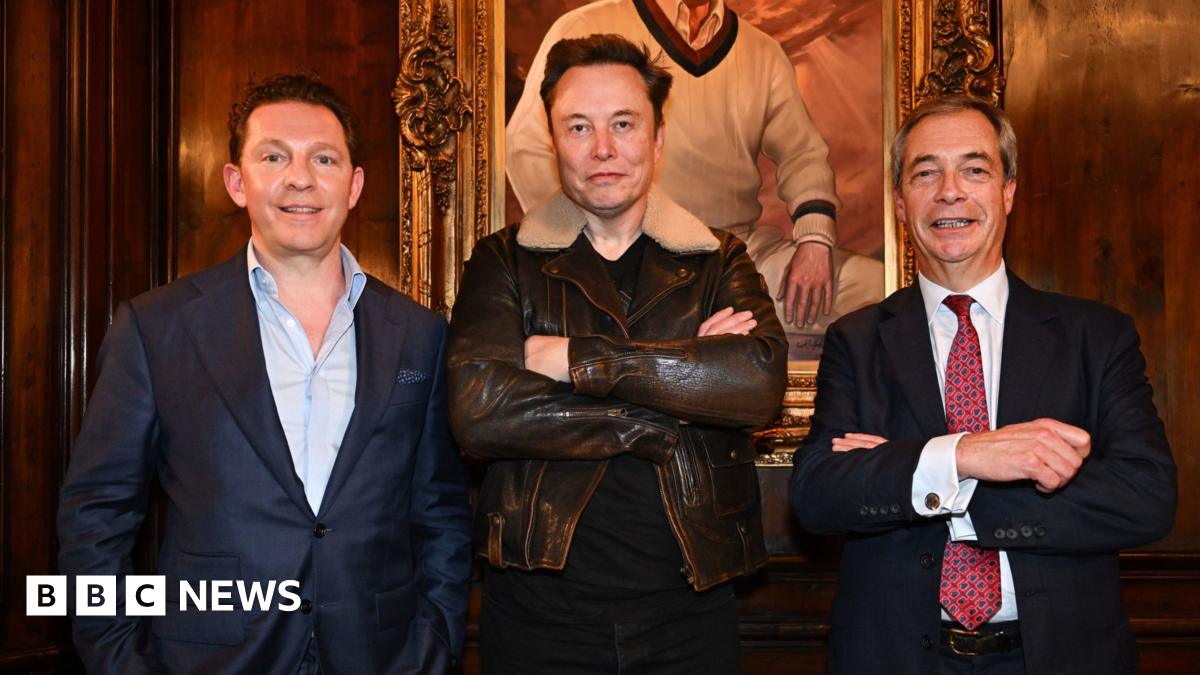World
How the BBC reports the UK general election 2024

 BBC
BBCThe general election takes place on 4 July 2024. It is the first time since December 2019 that the whole country has a say on who will sit as an MP in the House of Commons and which party will form the next government.
Here’s how the BBC covers elections and an explanation of some of terms used.
When are the results expected?
Voting in this election ends at 22:00 BST on Thursday, 4 July. Ballot boxes for the 650 constituencies are taken from polling stations to counting centres and counts begin immediately. The first seats declare some time close to 23:00 BST, the vast majority are declared before 09:00 on Friday morning.
We estimate 20 results will come in before 02:00 BST and the pace will pick up after that. Between 02:00 and 04:00 there will be 325 seats declared and between 04:00 and 06:00 another 275. The last few results come in later on Friday morning.
It is hard to say when we will know if any party has won the election, with enough MPs elected to form a majority in the House of Commons. It depends on how close the contest is, but it is likely to be sometime after 03:00 BST.
What is an exit poll? What is a seat forecast?
An exit poll is used to estimate the election result before all the votes are counted. It is released shortly after polls close and voting ends.
The exit poll is carried out by polling company Ipsos, jointly for BBC News, ITV News and Sky News.
Voters at some polling stations are approached as they leave and asked to fill in a mock ballot paper to indicate how they voted.
The results allow BBC analysts to forecast approximately how many seats each party has won across Britain. There are no seat forecasts for the Northern Irish parties.
Have constituencies changed since the last general election in 2019?
Yes. There are still 650 MPs elected to Westminster, but changes to constituency boundaries mean they are new or different from the last general election for millions of people.
To calculate if an individual seat has changed hands or how many seats a party has gained or lost in the election it is important to have an idea of how people would have voted if the new boundaries were in place in 2019. These are called notional results.
The BBC and other media organisations use these notional results to calculate change.
How are the notional results calculated?
An analysis of the boundary changes has been carried out for BBC News, ITV News, Sky News and the Press Association. It was done by election experts Colin Rallings and Michael Thrasher along with David Denver in Scotland and Nicholas Whyte in Northern Ireland.
They have worked out who would have won in each of the changed constituencies had the boundaries been in place in 2019.
This is not an exact science. When boundaries are redrawn and an area is moved from one constituency into another there is no official record of how that area voted.
This is where the experience and expertise of analysts comes in. To calculate the notional results, analysts use maps of the old and new boundaries. They look at the area, and use local knowledge and professional judgement to help them work out how people are likely to have voted.
What about by-elections?
There have been 23 by-elections since 2019 but the BBC does not include these in its change calculations.
For example, in North Shropshire, Liberal Democrat Helen Morgan won the seat from the Conservatives. If the Conservatives win the newly redrawn seat of North Shropshire on 4 July, the result will be described as a “Conservative hold”.
Likewise if Ms Morgan wins again, that will go down as a “Liberal Democrat gain”.
Comparing seat changes from general election to general election is a fairer way of representing political change than comparing general election results to by-elections.
Turnout is often much lower in a by-election than general election and by-elections sometimes see people voting for parties other than the one they would choose to form a government.
What is meant when a party holds or gains a seat?
What matters most is how many “seats” – constituencies – each party wins. For things to change in Parliament, political parties need to win seats from each other.
Because winning seats from each other is so important, a special language is used to show this.
Seats that are won fall into two categories: hold or gain.
- Hold: If a party wins a seat that the notional results show they would have won in 2019, this is described as a “hold”
- Gain: If a party wins a seat that the notional results show they would not have won in 2019, this is called a “gain”.
What happens when a candidate is suspended by their party?
Some candidates have been suspended by their parties during the election campaign.
If it happened after the close of nominations and withdrawals on 7 June, these candidates still appear on the ballot paper as representing their party.
In line with this, the BBC results pages will show these candidates as representing that party.
If one of these candidates wins, the BBC will still include them in the tally of seats won by their party.
This happened in the 2019 general election in the seat of Kirkcaldy and Cowdenbeath. There, the SNP candidate was suspended during the campaign yet still won. His victory was counted as a gain for the SNP, although he sat as an independent MP until an investigation took place.
What is a majority?
To win an election, a party must win enough seats in the House of Commons to form a government. To do that simply one party needs to get one more seat than all the others added together.
This is called an overall majority, but in the shorthand language of elections it is just called a majority.
There are 650 seats in Parliament, so to get one more than everyone else put together a party must get 326 or more to get a “majority”.
Of course, it makes things much easier for a government if they have many more MPs than all the others put together.
That number is called the size of the majority. So, if one party were to win 326 seats, then all the other parties added together would be 324.
The majority is therefore 326 – 324 = 2. So, the smallest majority possible is not one seat but two.
What is a hung Parliament?
A hung Parliament happens when no single party wins a majority. A party can stay in power without an overall majority by trying to forge an alliance with a smaller party to create a coalition government. David Cameron’s Conservatives did this with Nick Clegg’s Liberal Democrats in 2010.
Alternatively, it can aim to reach agreements with smaller parties to support it in Parliament in the event of a confidence motion aimed at bringing down the government.
This can be in the form of a confidence-and-supply agreement – as with Theresa May’s Conservatives and the Democratic Unionist Party in 2017. The DUP didn’t take ministerial positions but agreed to support the party in confidence votes and budgets.
Another possibility is for the biggest party to form a minority government with no agreements with other parties, and just try to get support in favour of each individual bill on an ad hoc basis.
If no party is prepared to go down one of these paths, it could ultimately lead to fresh elections.
What is displayed in the results banner?
The banner is the summary graphic at the top of pages on the 2024 general election.
When polls close at 22:00 BST, the graphic will show two rows of numbers. The top row is the exit poll; the projected seats for the top five parties. See the What is an exit poll and seat forecast? section for more information.
The second row will be the actual results, which will be updated as constituencies declare.
When the first results are declared, parties will begin to be ordered left to right by the number of seats won at that time, with the number of votes received working as a tie-breaker.
As the night progresses, the summary results graphic will always display the top five parties according to seats won. All other parties’ seats will be amalgamated into “Others”.
Once a number of seats are in, the rows will switch with the results taking precedence at the top of the summary graphic.
When we get closer to the end of the night, the predictions will be switched off and we’ll just be left with a bar chart summing up the results.
Full UK results are always available via the link to the results homepage, which contains party listings and breakdown of seats, votes and vote share by party.
There are also separate results pages for each of the four nations in the UK, and one for every constituency.
We also publish results for Wales and the 32 Welsh constituencies in Welsh.
What happens in the Speaker’s seat?
The Speaker is a neutral figure in the House of Commons, almost like a referee.
Currently, Sir Lindsay Hoyle is the Speaker. He used to be a Labour MP and will have to stand for re-election like any other MP. Traditionally, the biggest parties in the House of Commons do not stand against the Speaker.
Sir Lindsay is standing for election in Chorley, Lancashire. For the purposes of calculating the number of seats belonging to each party – and calculating those held, gained or lost by each party – Sir Lindsay’s seat is regarded as being a Labour constituency, as he won it for the party in 2017 before being elected Speaker.
If Sir Lindsay wins again, the result in 2024 will be described as “Speaker win” – and his seat will be added to the Labour total and not included in any seat change calculations.
This means the 326 majority target still works, as there is traditionally one deputy Speaker from the same side of the House as the Speaker, and two deputies from the opposing bench.
The individual votes for Sir Lindsay will be added to our “Others” tally, however, not included for Labour.
What about where MPs have changed parties?
There are a handful of candidates standing at this election who stood for a different party when they were elected in 2019. Notably, the former leader of the Labour Party Jeremy Corbyn is standing as an independent in Islington North and the former deputy Chairman of the Conservative Party, Lee Anderson, is standing for Reform UK.
For the purposes of calculating change in seats, we will compare these areas with how they were immediately after the 2019 election.
Let’s use the case of Lee Anderson as an example. He won Ashfield in the East Midlands, for the Conservatives in 2019, but has been a Reform UK MP since February 2024.
In 2024 he’s running again in Ashfield.
If Mr Anderson wins there this time around, that will count as a Reform UK gain and a Conservative loss, even though he would have been a sitting MP before and after the election.
If the new Conservative candidate for Ashfield wins, that will be a Conservative hold rather than Reform UK loss.
What is a cartogram?
Constituencies in the UK have broadly similar numbers of people living in them. In general there are about 70,000 eligible voters in all UK constituencies. But there are exceptions for island constituencies, like Na h-Eileanan an Iar in Scotland, which has a population who can vote of just over 20,000.
Each seat has equal value in the House of Commons, but the way you view them on a map can be quite skewed – rural areas where populations are more spread out take up more space than inner city ones, for example.
The cartogram is a way of viewing each seat as equal size, while attempting to show roughly where in the UK they are.
All the seats are correctly within the right nation and English region, but they are occasionally arranged strangely within that.
There are some, mostly around London – whose high population density distorts the map most significantly – that are in different places to where you’d expect, no longer neighbouring the seats they lie next to geographically.
Why don’t vote share changes add up?
On national and constituency scoreboards you may find that if you add all the vote share gains and losses together they don’t equal zero, and it’s not clear where extra votes have come from.
That’s because we only include vote share changes for parties or independents that are running in this election.
So in a constituency where a certain party is not standing this year but they stood in 2019, like the Conservatives in Rotherham the 33% they notionally won in 2019 won’t be accounted for in the change figures.
The figures for the parties that are running this year will all be correct individually though.
If a party or independent is running this year but didn’t run in 2019, their vote share change figure will be the same as their vote share because it is in effect an increase from zero.
How does the BBC calculate turnout?
On election night, the BBC calculates percentage turnout by dividing the number of valid votes cast for all candidates by the number of people eligible to vote (known as the electorate).
Spoilt or rejected ballots are not included.
The UK and nations turnout figures are updated through the night, based on electorates divided by valid votes of all constituencies declared so far.
Which parties are listed in the overall results tables?
To appear as a named party in either the overall UK scoreboard or a nation scoreboard, a party must fulfil one of the following criteria:
- It is standing in one-sixth of seats in any UK nation
- It is fielding more than 10 candidates either across the UK or in a single nation
- It achieved greater than 0.1% of the vote at UK or nation level
- It had a sitting MP in the last Parliament
All parties which do not meet these criteria are amalgamated into a group called Others, including the 459 independents running this year.
Each constituency page will always name every party and independent standing in that constituency.
The BBC only recognises parties which are registered as political parties by the Electoral Commission.









